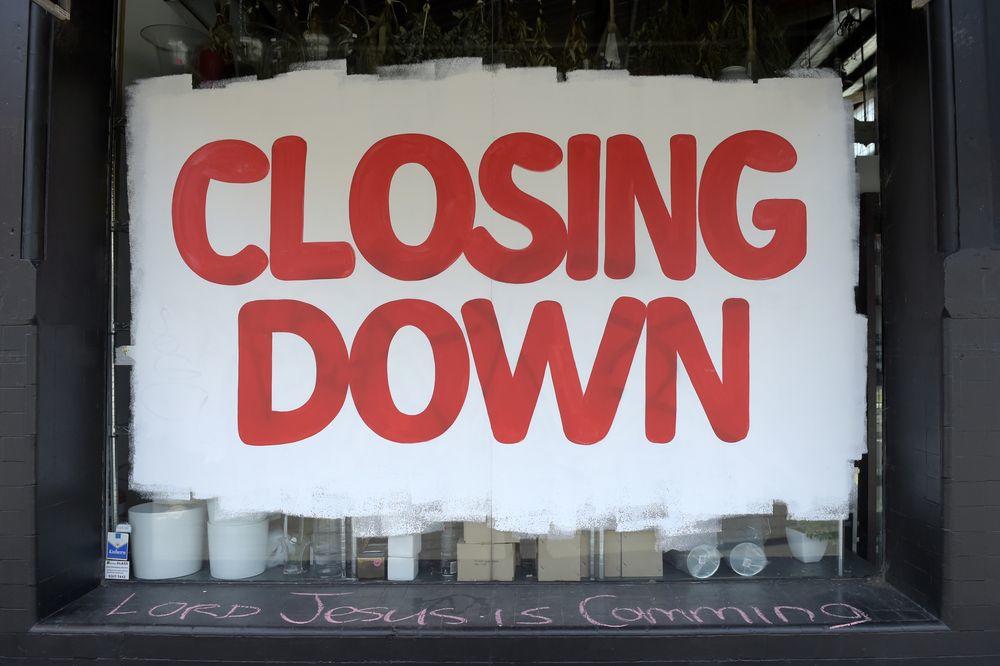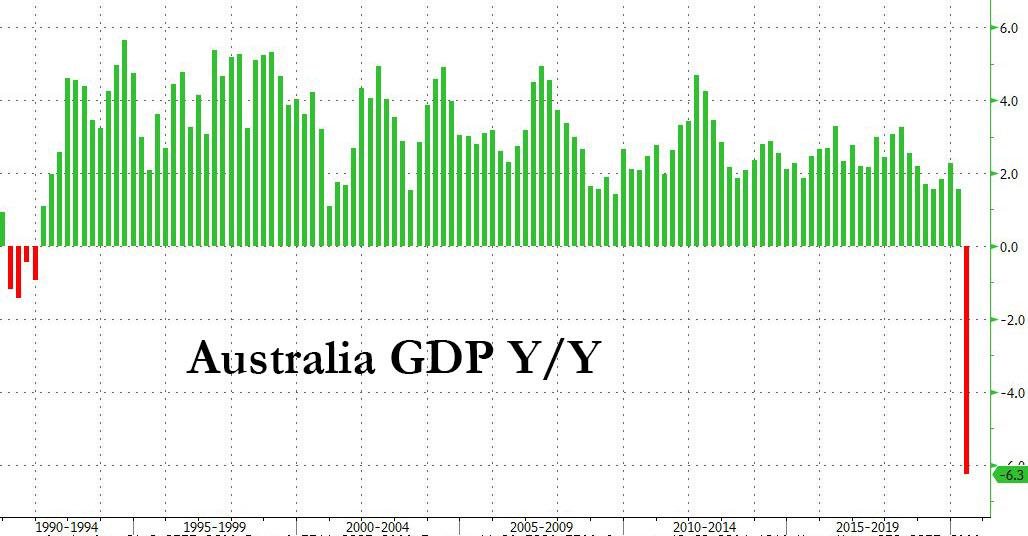Australia Plunges Into First Recession In 29 Years Following Biggest GDP Drop On Record Tyler Durden Tue, 09/01/2020 - 22:31
Nothing good lasts forever, as Australia just discovered when after seemingly defeating the gravity of the business cycle and lasting a record 29 year without an economic contraction, the country tumbled head first into its first recession in almost 30 years, which also happened to be the worst on record as its Q2 GDP plunged -6.3% Y/Y, worse even than the consensus estimate of a -6.0% drop.
GDP plunged 7% sequentially from the first three months of the year - hammered by the renewed Covid outbreak and lockdown in Victoria state - the first back-to-back quarterly declines since 1991. The sequential drop also was larger than economist forecasts of a 6% drop.
As Bloomberg notes, "Australia’s record run of avoiding two consecutive quarters of negative GDP, which included avoiding recessions during the 1997 Asian Financial Crisis, the Dot Com Bubble and the 2008 global financial crisis, has come to an end with the largest contraction on record according to ABS data dating back to 1959. It now joins much of the world in succumbing to a pandemic-induced downturn."
The report also showed:
- Household spending plunged 12.1%, subtracting 6.7 percentage points from GDP; government spending rose 2.9%, adding 0.6 percentage point
- Investment in new and used dwellings fell 7.3% in the quarter
- Net exports contributed 1 percentage point to GDP
- Just like in the US, the savings rate soared, hitting 19.8%, the highest rate since 1974
Australia’s desire to declare an early victory against covid which was accompanied by an early lifting of restrictions and reopening of its economy, proved catastrophic and has been offset by an almost two-month lockdown in Melbourne, the nation’s second-largest city with about 5 million people, crushing any hopes of a recovery.
In March, Australia's Reserve Bank cut its cash rate to a record-low 0.25% and set the same target for the three-year bond yield as it aims to lower borrowing costs across the economy. As Bloomberg notes, the RBA predicts the renewed lockdown will lift unemployment to about 10% later this year.

The government, meantime, has followed the rest of the world in flooding the country with fiscal stimulus, injecting tens of billions of dollars into the economy including its signature JobKeeper wage subsidy program designed to keep workers attached to firms as it tries to maintain employment connections until activity can resume.
The silver lining is that the stimulus unleashed in China - Australia's top trading partner (which is in jeoaprdy due to an escalating diplomatic feud) - to revive its economy is also fueling demand for Australian commodities and lifting prices, keeping the terms of trade elevated in the second quarter. In Q2, Australia saw a record current-account surplus of A$17.7 billion ($13.1 billion) aided by the weaker dollar and the country nation’s closed international borders which is keeping people from traveling abroad.
Meanwhile, on Tuesday the central bank boosted a line of cheap funding to banks to A$200 billion. In addition to supporting the economy, that should also help ease some of the upward pressure on the currency by confirming the RBA’s commitment to keeping conditions accommodative until activity recovers.
While the recession was widely expected, the aussie dollar slumped against the dollar, sliding from 0.7375 before the news to 0.7337 before paring some of the losses. The Australian dollar has benefited from Australia's trade position, soaring almost 30% from a nadir in March.
https://ift.tt/3hTAAAT
from ZeroHedge News https://ift.tt/3hTAAAT
via IFTTT





0 comments
Post a Comment